
The best 43- and 42-inch TVs are always popular, and with good reason – these sizes are perfect for smaller rooms, but can often save you a decent bundle of money compared to larger options, too. They also provide excellent picture quality on the whole, especially regarding the best OLED screens you can find on the market.
While TVs measuring 43- or 42-inches corner to corner don't always come with the latest and greatest features, these sets invariably offer decent quality and are smart enough for a modern home. As with most thin TVs, sound quality can be an issue, depending on the set – but then again you can always pick up one of the best soundbars to match.
As a long-serving T3 contributor, having spent more than two decades looking closely at all manner of tech gadgets (including televisions, of course), here I've rounded up the very best 43- and 42-inch TVs you can buy today. They all offer an appealing combination of price, features, picture quality, and on-board software that won't disappoint – and our top pick for most people is the LG OLED C5.
To see what's on offer in the slightly higher-end tiers, check out our other round-ups of the best 48-to-50-inch TVs and the best 55-inch TVs – these do have significant differences, but you will see that reflected in the price you pay. Our recommendation to get the best deal is to purchase one of the older makes and models, as outlined below.

Dave has been writing about TVs and a host of other gadgets since before anyone knew what Google was – and he's sat in front of enough panels in that time to know the difference between a great TV and a dud, at any size.
Recent updates
Update 10 April 2025: We've completely revamped our guide to the best 43- and 42-inch television sets you can buy right now, so you've got a fully refreshed pick of models to choose from. As we get more product launches through the course of the year, we'll be sure to update this article to reflect the latest products and trends.
T3's Top 3
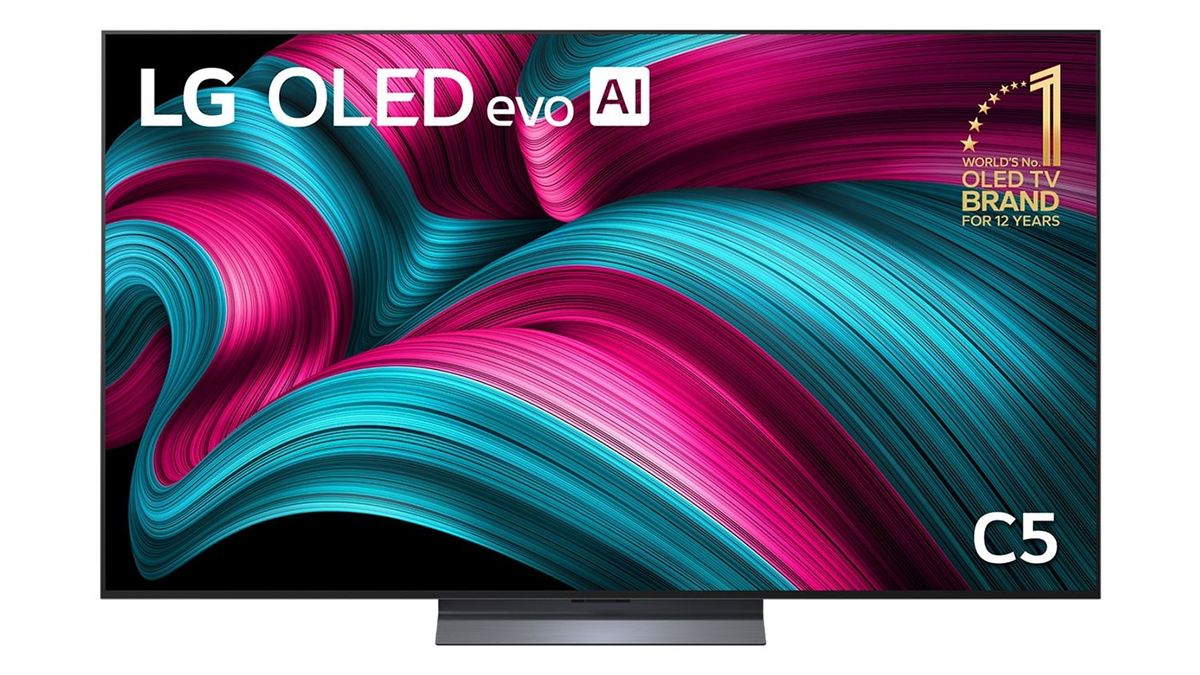
Best for most people
Our top pick for most people is the LG OLED C5, another fantastic high-end offering from LG that's really impressed. In terms of performance vs price, it's the TV to beat at the moment – and you're not going to be disappointed by the incredible image quality here.
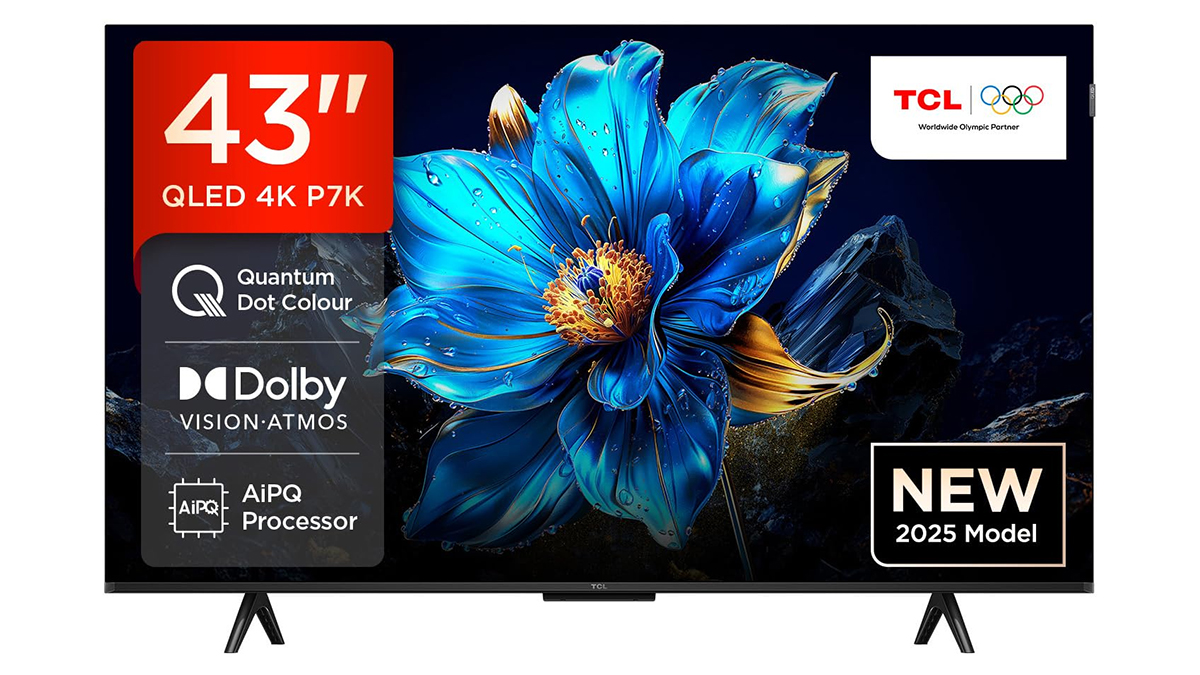
Best affordable
If price is your number one concern, then the TCL P7K gets you 43 inches of a great television for not much money at all. It comes it significantly cheaper than most models at this price, without making too many compromises in terms of overall quality.
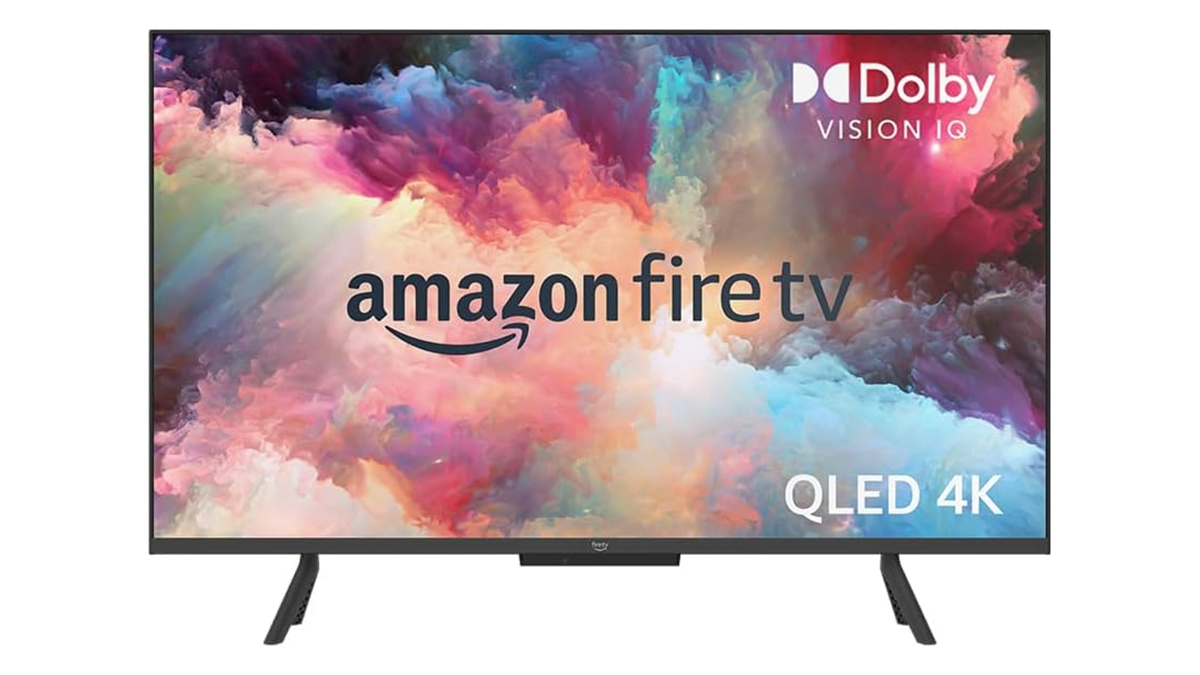
Best deal
You'll find the Amazon Fire TV Omni QLED available at all kinds of competitive price points over time – which is what Amazon tends to do with a lot of its own products – and you get a great picture and lots of streaming features in return for your cash.
The best 43- and 42-inch TVs in 2025
The best 42-inch TV for most people
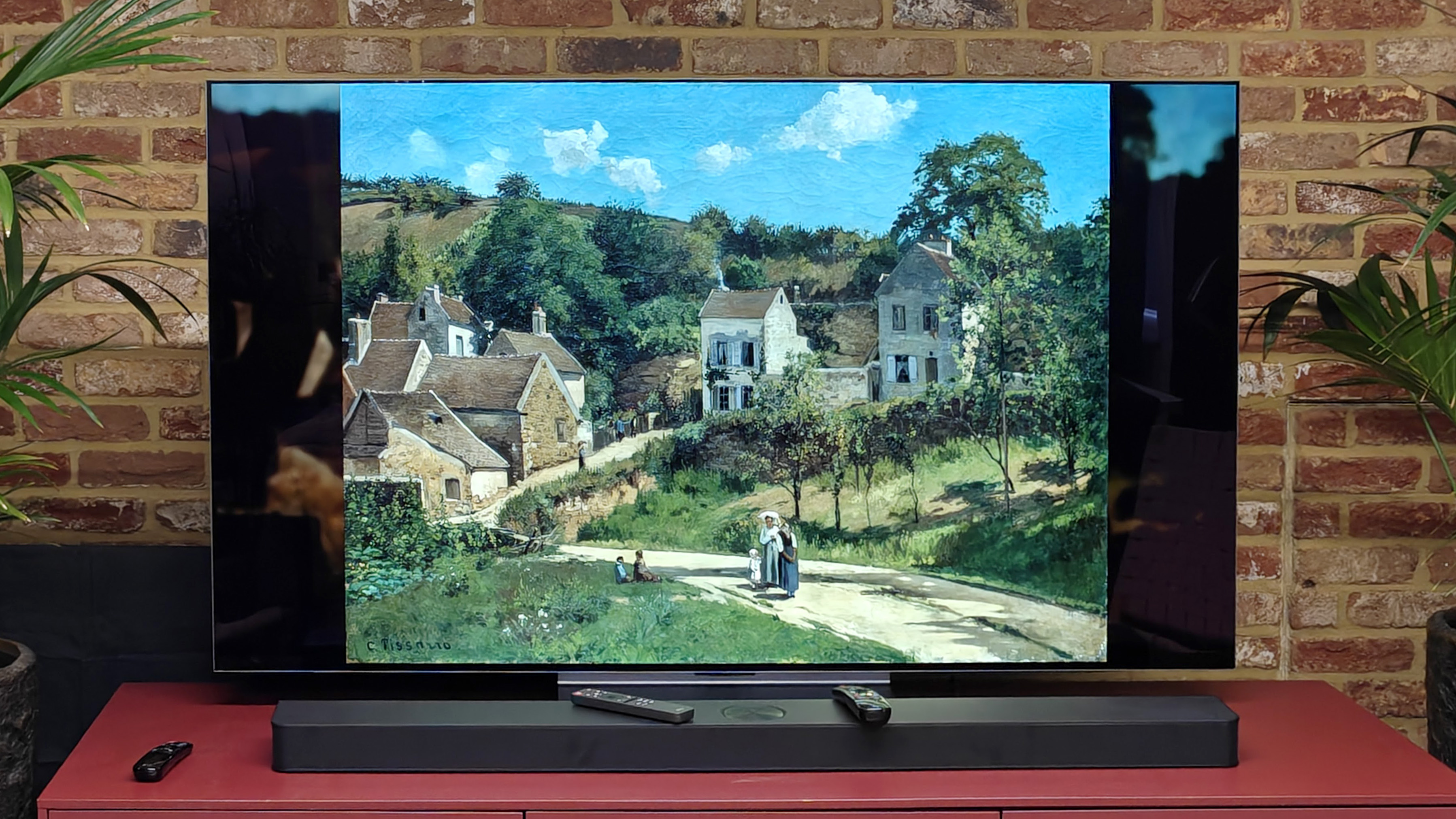
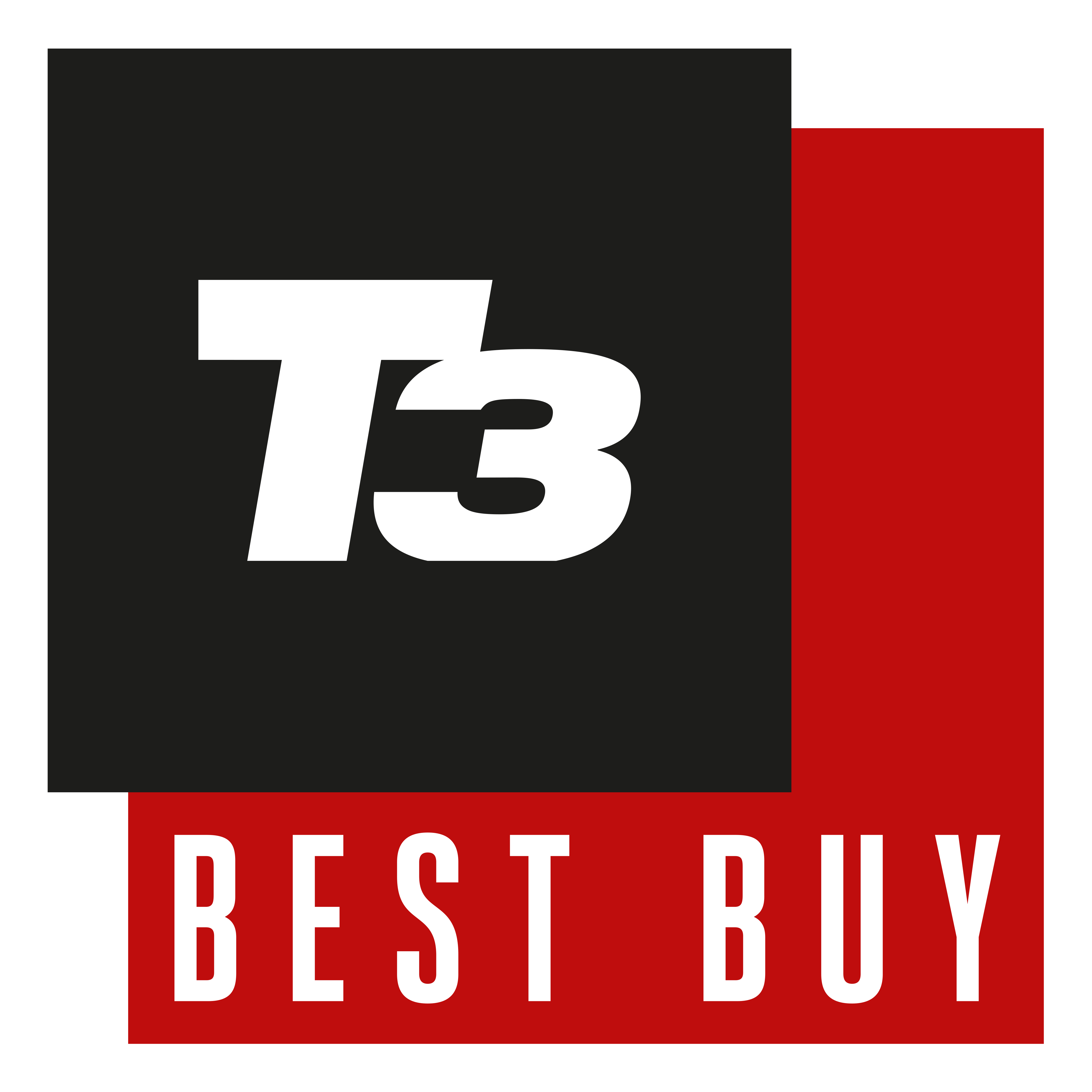
Specifications
Reasons to buy
Reasons to avoid
Here at T3 we're running out of superlatives to use for the C-series televisions from LG, and the LG OLED C5 is another fantastic achievement. It's a mid-ranger TV that has that balance between price and performance that most people are looking for, and it looks like a TV model that costs much more – always a good sign for a device.
In our LG OLED C5 review, we described this set as offering "improved brightness, sharper imagery, and a more personalised user experience" compared to its immediate predecessor, and we concluded that this is an "exceptional OLED TV, with a premium feature set". Not bad for something at a sub-flagship price point.
With an up-to-date processor and even some AI smarts on board, this is a TV set with a lot to offer, whether you're a gamer or a movie fan. We've got four full-fat HDMI 2.1 ports around the back too, so you're well catered for, whatever you're connecting in terms of sources. The best TV for most people at this particular panel size.
The best cheap 43-inch TV
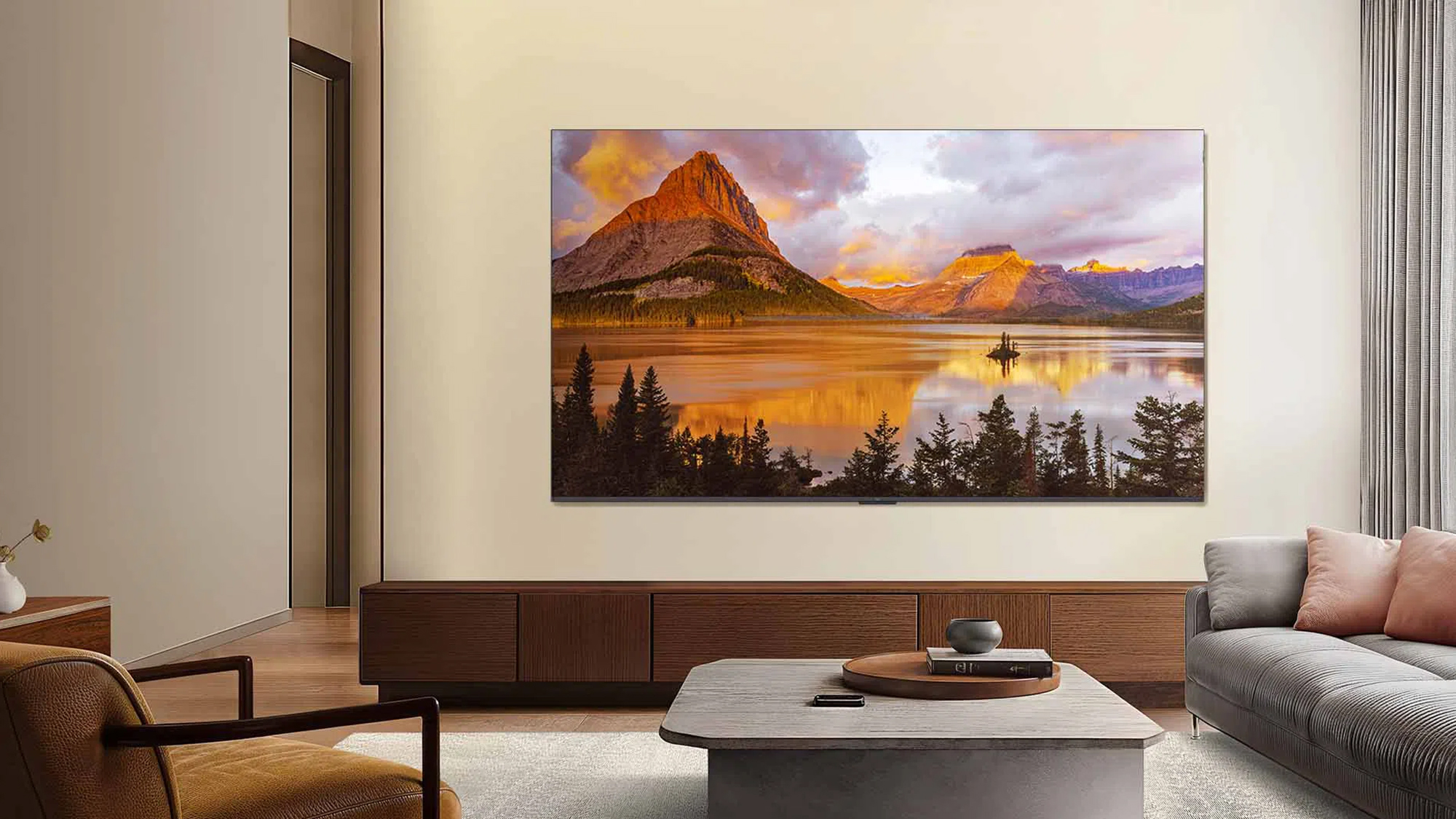
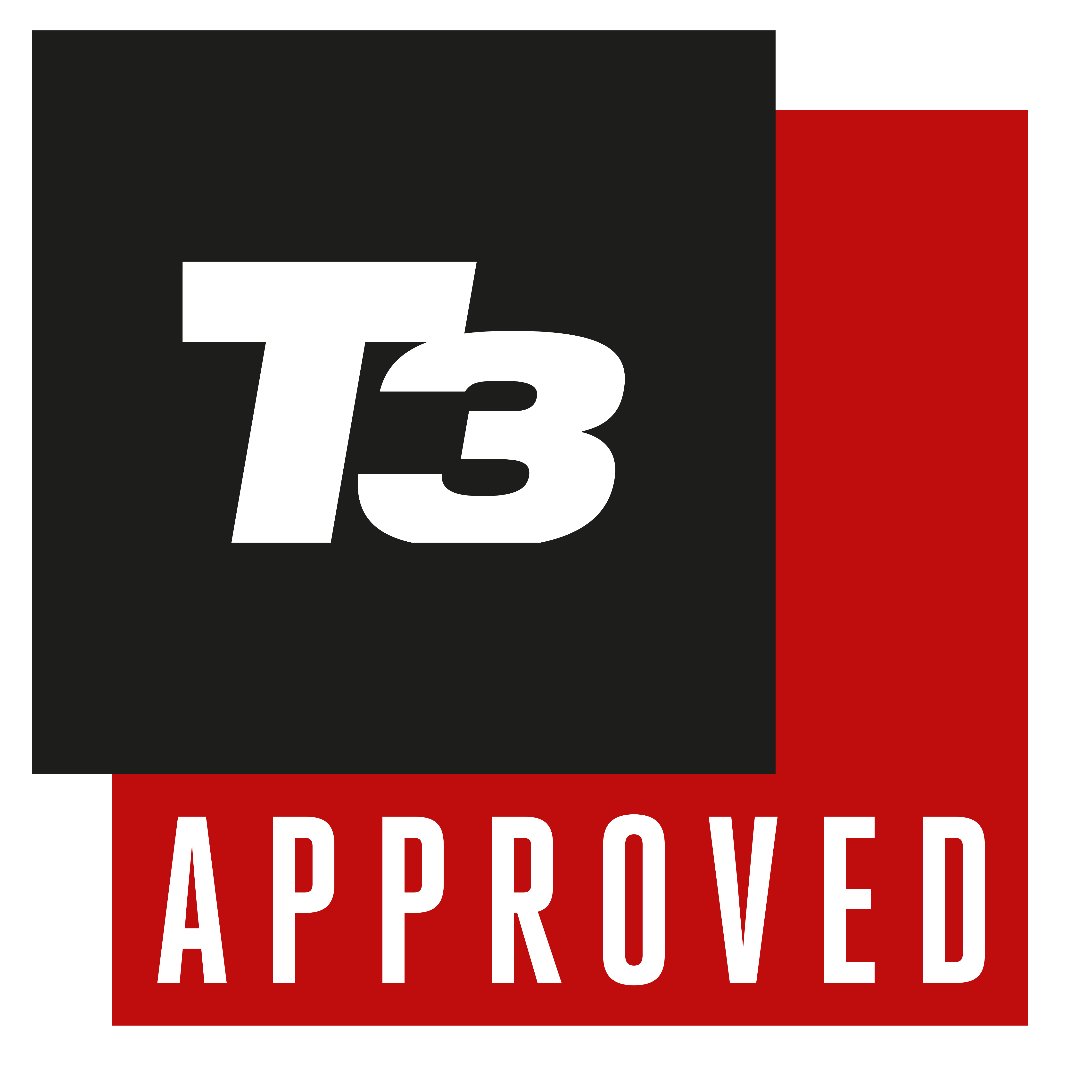
2. TCL P7K
Our expert review:
Specifications
Reasons to buy
Reasons to avoid
Sometimes you just want the best TV you possibly can for a certain amount of money, and if you're watching the pennies then the TCL P7K is a really appealing choice. It's available at a very affordable price point compared to other televisions at this size, and yet it doesn't make too many trade-offs in terms of picture quality and features.
With both stand and wall-mount options, and three HDMI 2.1 ports to make use of, the TCL P7K is as versatile as it is impressive in terms of its visuals. There's good motion and HDR support, while the on-board processor makes sure the pixels are finely tuned in real time to give you the best picture possible, no matter what you're watching.
Then there's Google TV on board, which remains one of the better software platforms out there when it comes to getting all of your streaming apps in one place. Taken as a whole package, the TCL P7K could well be the best 43 or 42-inch TV out there right now in terms of affordability – proving you don't need to spend big for a great TV.
The best 43-inch TV deal
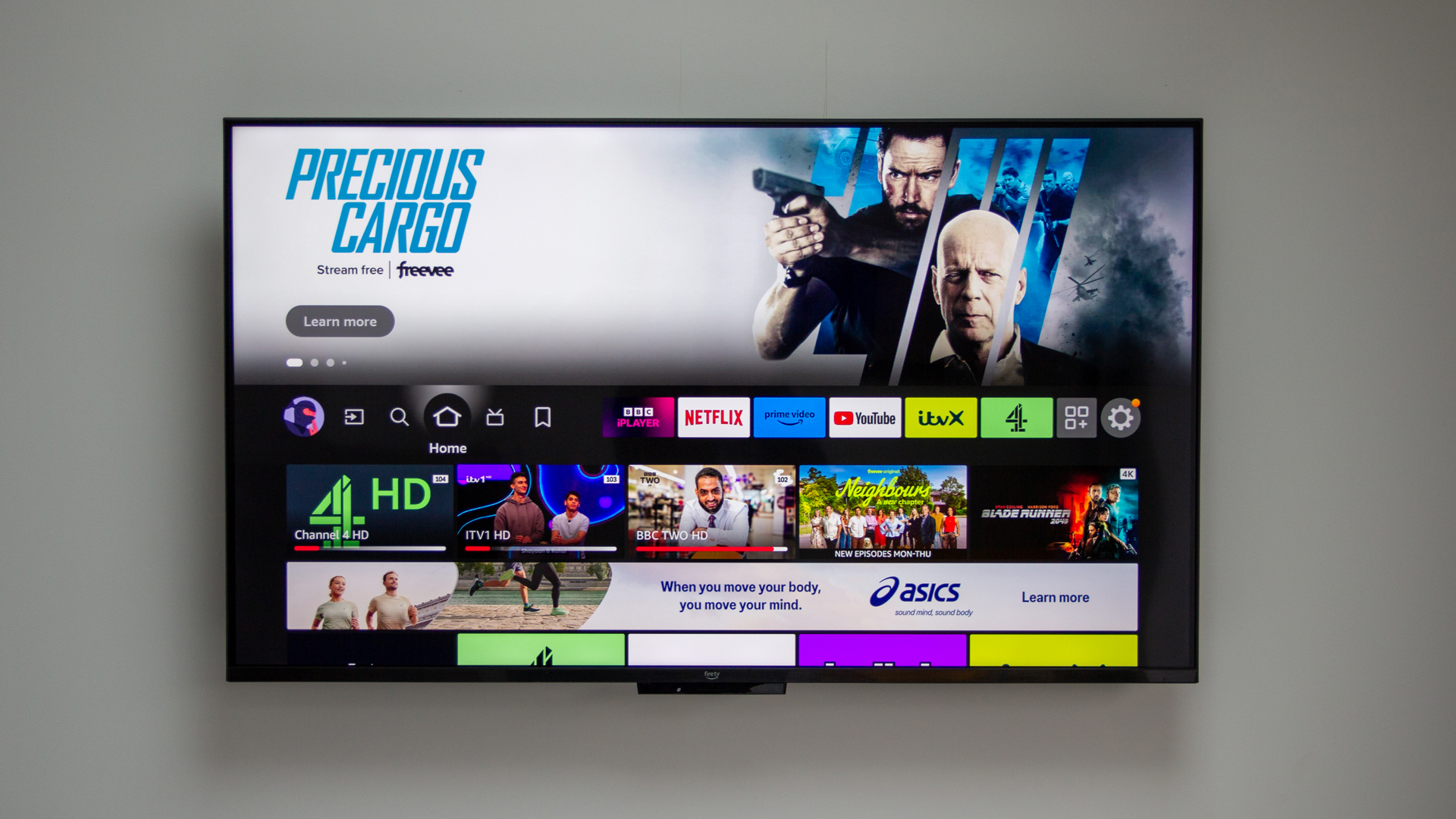

Specifications
Reasons to buy
Reasons to avoid
We've named the Amazon Fire TV Omni QLED as the best deal you're going to get on a 43 or 42-inch television set at the moment, and that's because Amazon is always tweaking its prices: chances are you're always going to find this set at a very appealing price (check the embedded widgets for the best offers currently available on Amazon).
Price and value for money aside, the Amazon Fire TV Omni QLED continues the tradition of Amazon TVs that cover all the basics very well. They don't have the top specs or the best panels, but they do give you a lot of bang for your buck – in terms of the quality you can expect from the visuals and the sound, and the integrated features.
Head over to our Amazon Fire TV Omni QLED Series review, and you'll see there's mention of an attractive design, decent picture performance, and plenty of customisation options on board. Then of course there's the Fire TV platform, which is a comfortable home for all of your various audio and video streaming apps.
The best luxury 42-inch TV
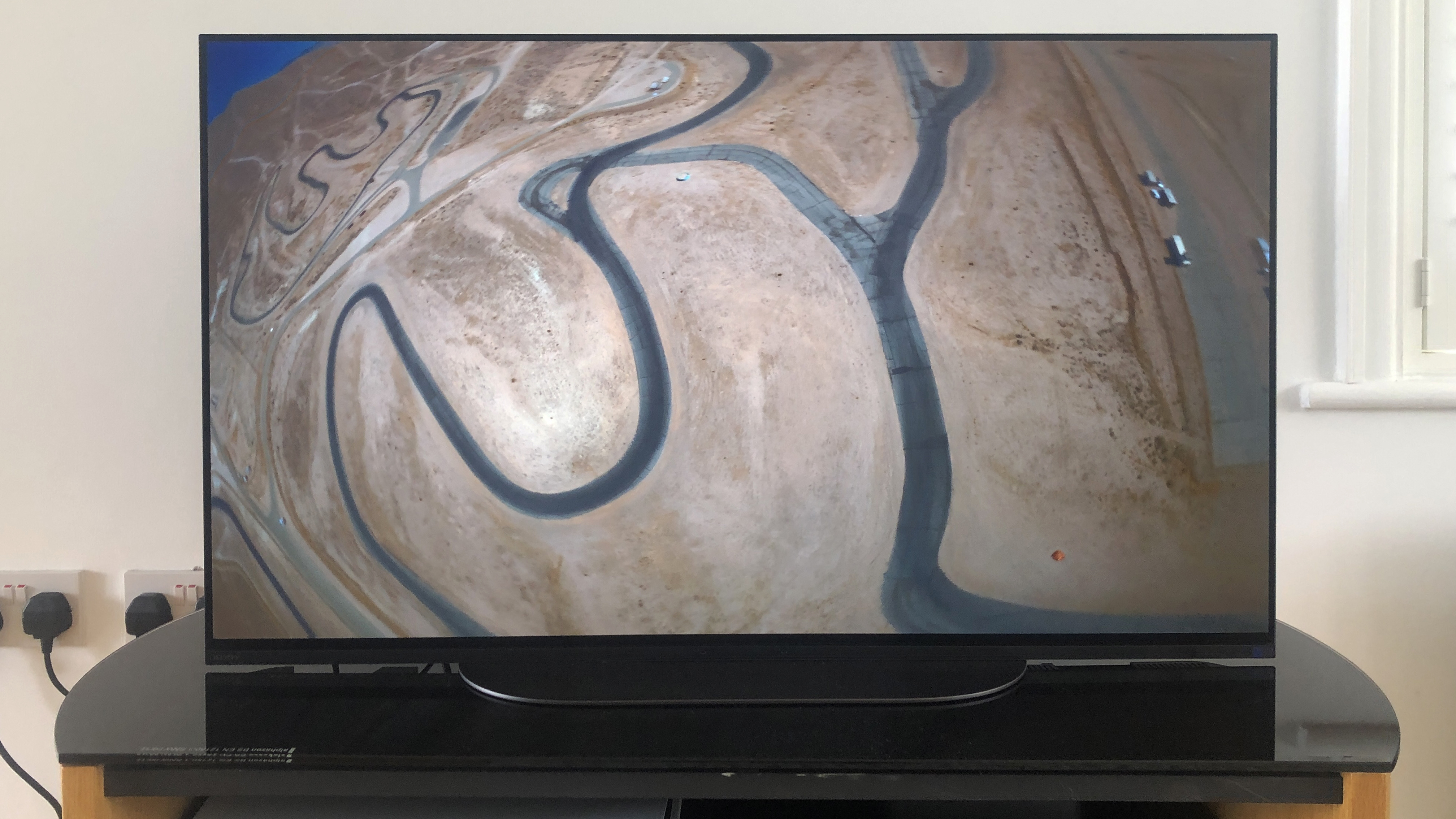

Specifications
Reasons to buy
Reasons to avoid
Don't be put off by the fact that this Sony OLED TV is a little old now, because there's still lots to like here: the picture quality is outstanding for all sources of content, there are a host of connectivity options to choose between (including Apple AirPlay and Google Chromecast), and the highest-quality 4K content really shines as well.
The Sony A90K is also to be commended for the way in which it tweaks picture quality on the fly, thanks to an integrated Cognitive Processor XR chip (also be found in Sony's bigger, even-more-expensive TVs). It's particularly good for maintaining the quality of gaming experiences (and gamer-friendly HDMI 2.1 tech is supported on two ports).
To quote our Sony X90K review, we've got "an invisible audio system, some very welcome next-gen games console support, and Sony's usual impeccable quality of build and finish", as well as "very little downside to the images the Sony delivers". The colour balance is described as "exquisite", leading to luxurious OLED viewing.
The best 43-inch TV for subscribers
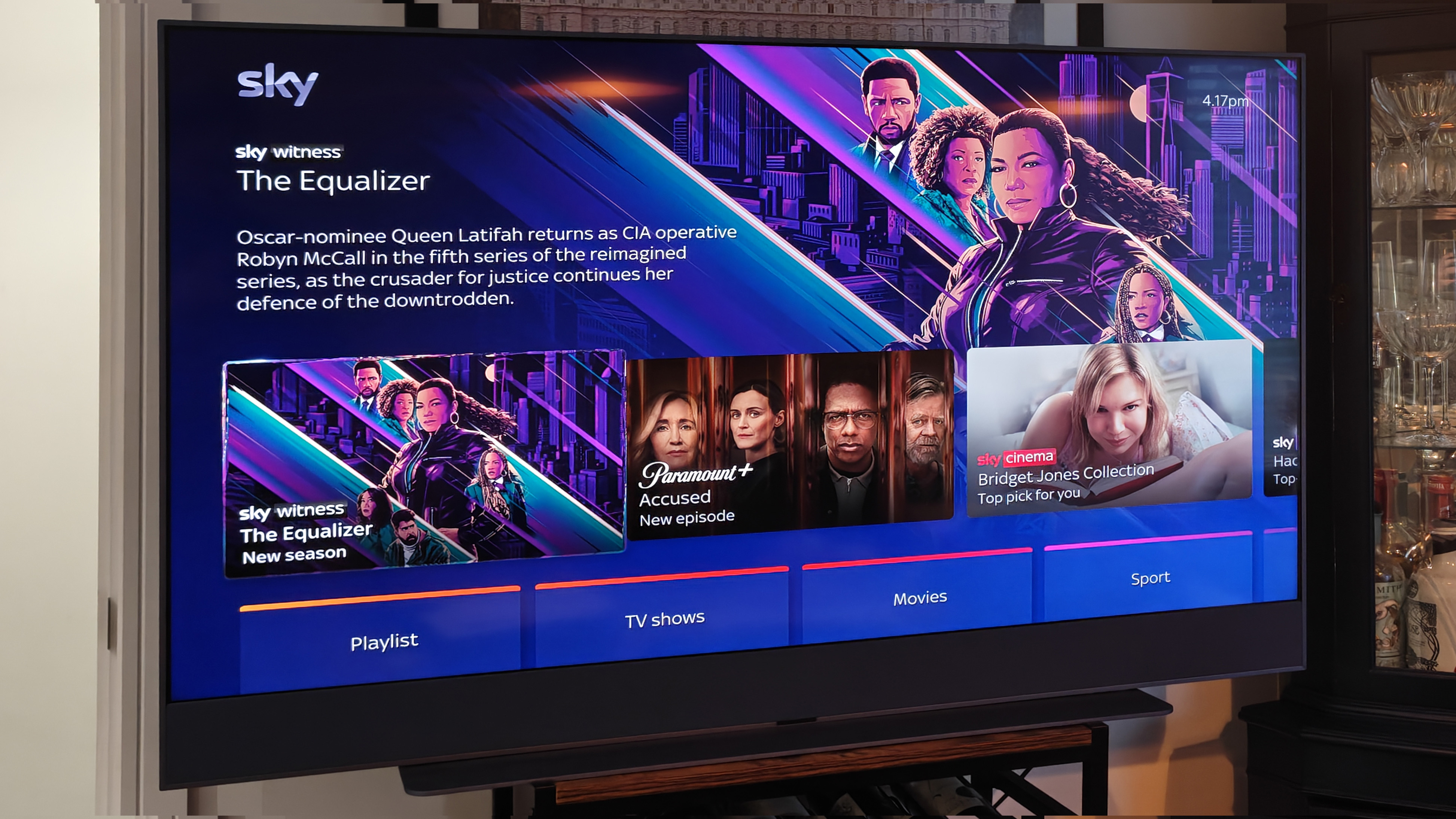

Specifications
Reasons to buy
Reasons to avoid
The thinking behind the 2nd-gen Sky Glass television (and the original model that came before it) is that you just need the TV and a Wi-Fi connection to enjoy everything Sky has to offer – there's no need for a box, or a dish on your wall, because everything is streamed over the internet. That includes live TV as well as your on-demand content.
In our Sky Glass (2025) review we said that this TV is "the ideal TV for some people" – those people being those who want and can afford a Sky subscription. It's "super easy" to set up and "a doddle" to use, and a TV that "delivers on the good stuff". If you've never seen what Sky offers in terms of content, there's an awful lot of it to pick from.
There are some compromises to consider here, and there are also TVs with better quality panels out there, but the picture and sound quality is still great – just not the very best you can get. It's a genuinely different way of getting your television delivered to you if you're in the UK, fully adopting the idea of over-the-internet streaming.
The best designed 43-inch TV
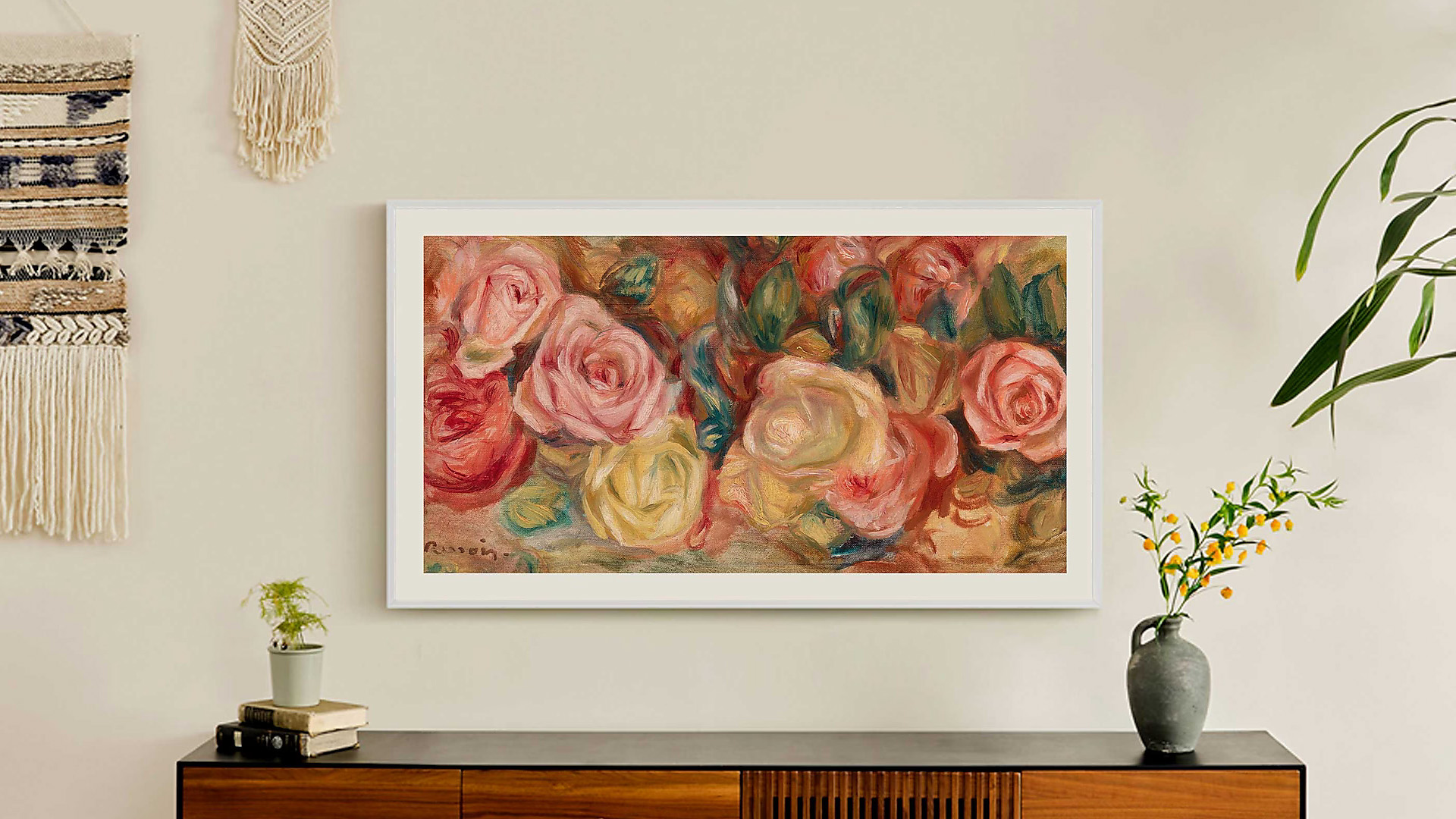

Specifications
Reasons to buy
Reasons to avoid
A stunning 43-inch set that's definitely worthy of your consideration is the 2024 edition of Samsung's The Frame – one of the smallest TVs with Samsung's QLED technology. The benefits of QLED are far-reaching but to sum it up, you get a wider range of colours, higher peak brightness, and support for HDR10+ for a superior picture.
While you're guaranteed to be impressed by the image quality, that’s not what makes this TV so special. Samsung has put a lot of thought into making this a part of your living room decor and not an addition to it: When The Frame is switched off, it transforms into an artwork or digital photo frame, with customizable bezels.
You can choose from 1,400 different pieces of art from the Art Store if you pay a monthly subscription fee, or upload all of your favourite shots from your phone to the set. Outside of rather middling sound quality, this is an impressive masterpiece of a TV. For more on the technology, have a read of our Samsung The Frame (2023) review.
Honourable mentions
Samsung BU8500: this 4K mid-ranger punches way above its price point, so makes sense if you're looking to get a 43 or 42 inch TV on a tight budget. It still has plenty to offer in terms of picture and audio quality, but it's not a top-tier performer.
Philips OLED 809: we're almost always impressed with what Philips has to offer in the TV department, and this OLED set comes with the power of Ambilight as well, so you can get the background lighting to stay in sync with whatever's on screen.
Samsung S90F: this is a real treat in terms of what you get from the OLED panel, based on our testing, but it's perhaps a little too expensive for a lot of budgets. Perhaps worth saving up for if you're interested in the best OLED technology around.
FAQs
There's a lot to weigh up when it comes to the best 43 and 42-inch television sets, and all that choice can be a little overwhelming. To help you narrow down your decision, here are some of the questions most likely to be swirling around in your head – together with our expert answers.
OLED or QLED?
The options we've presented above give you two main TV panel choices: OLED and QLED. So what's the difference? The short answer is 'not a lot'. Both these technologies are improving year on year, and can offer fantastic pictures – a top-tier OLED screen can beat a middling QLED option, and vice versa.
Generally speaking, and we are over-simplifying here, OLED panels offer superior colour performance and deeper blacks, while not quite reaching the brightness highs of QLED. They're also a little more expensive, but are broadly considered to be the gold standard when it comes to TV tech (at any size).
Of course it therefore follows that QLED panels can be brighter and more affordable than their OLED equivalents. Do check the details in each review though: manufacturers often add in their own tweaks and refinements to OLED and QLED, which is why they often come with different names and labels attached.
If you're interested in the technical details, QLED is based on technology where the actual TV panel and its backlight are put together as separate layers. With OLED, the same panel produces the coloured pixels and the light, so it's a more integrated (and a more expensive) option.
How many HMDI ports do I actually need?
The number of HDMI ports available to you obviously affects the number of different gadgets you can plug into your TV: think streaming boxes, games consoles, satellite boxes, even laptops and docking stations. Try and figure out all the different devices you're going to need ports for before buying.
You'll see we've listed these TVs together with how many HDMI 2.0 and HDMI 2.1 ports they offer, and there is a difference between them. While HDMI 2.0 is perfectly fine for the majority of tasks, HDMI 2.1 does give you a significant upgrade if you're keen to get access to the best connectivity tech currently available.
HDMI 2.1 gives you access to more bandwidth (48 Gbps versus 18 Gbps), so resolutions can go up to 8K. What's more, the newer tech supports 4K resolutions at a refresh rate of 120 frames per second, which can come in handy if you're gaming (gaming features such as variable refresh rates are also supported).
If you're planning to hook up a PlayStation, Xbox, or gaming PC to your new TV then you might want to make sure at least one of the HDMI ports on your 43-inch or 42-inch television supports HDMI 2.1. Generally speaking though, the more ports the better, especially with support for the latest standards.
Does on-board software really matter?
To a certain extent, the software that comes built into your television doesn't matter all that much – not when you can get hold of something like the Amazon Fire TV Stick 4K Max for around £70 / $60 / AU$119. There are loads of streaming devices on offer to plug into your TV, and most of them are pretty affordable too.
Bear in mind that if you connect a games console, it'll have a software interface of its own: you can run all the best streaming apps on PlayStation and Xbox consoles, which means you do have other options if you're not that impressed with the software that comes with your television set.
Generally speaking, we've been impressed with the likes of LG and Samsung in terms of their on-board software. These interfaces aren't as clunky as they used to be, and typically offer support for all of the streaming apps you're going to want access to (though do check the details if you use more obscure streaming services).
You'll find some TVs, including Sony models, come with Google TV on board. This is perfect if you're heavily invested in the Google ecosystem: you can save shows and movies you want to watch from Google search results, for example, and they'll then show up in the watchlist on your TV.
How to choose the best 43 and 42-inch TVs
For many people, a 43-inch or 42-inch TV is the perfect size for a smaller living room or lounge. It’s big enough to deliver a detailed picture at a sensible viewing distance, but not so big that you feel you’re in the front row of the cinema.
As a general rule, the best viewing distance is around twice the diagonal screen distance. So for a 43-inch smart TV, you should ideally be sitting about seven to nine feet away, though these are only rough guidelines.
A 43-inch TV is the first screen size where you can really begin to enjoy the higher resolution benefits of 4K Ultra HD. QLED tech currently dominates, though there are now some OLED options, while HDR performance is continuing to improve across the board on these smaller sets.
Another consideration when choosing is the smart TV platform included by the manufacturer: if it's good enough, you can do without a separate streaming box or dongle. Most TV makers now have a decent enough software solution, or make use of a third-party one like Google TV.
The one thing you shouldn't expect from many 43 and 42-inch TVs is blockbuster built-in sound. A few have more impressive speaker systems than others, but the small size and lower price means it just isn't a huge focus for most of them. Their sound will be perfectly adequate, of course, but not cinematic. Our list of the best soundbars has some excellent compact options in a range of budgets, if you want an audio upgrade.
How we test the best 43 and 42-inch TVs
Head over to our dedicated How We Test page for a full rundown of everything you need to know about how we weigh up the products that we come across – but in summary, we're as comprehensive as possible, whether we're noting down physical dimensions or studying brightness levels.
Much like other devices that T3 covers, testing a TV mostly comes down to actually taking the time to live with it, first and foremost. Our reviewers install review TVs as their main displays and use them for at least a couple of weeks, to really get a sense of how they perform in a wide range of scenarios.
That can mean different lighting conditions, to assess a manufacturer's claims about brightness levels, but it also involves different types of media. A TV that excels when watching sport might not fare as well with darkly-lit moody movies, for example, and gaming is a separate matter, too.
Of course, we're not afraid of specs lists, either, and we'll always keenly assess what a TV offers compared to others in its price range. This might mean the array of ports that it boasts (with HDMI 2.1 ports, for example, now very welcome), or which picture and sound modes it can offer (such as Dolby Vision and Atmos). All of these factors play into our write-ups of TVs.
Once our writer has tested a given TV extensively, it'll come time to assign a score to the panel, with a five-star award being the mark of a truly great display. Of course, there are still plenty of extremely creditable options that fall slightly short of that mark.
We also put reviewed hardware devices into a wider context – whether that's in terms of their current pricing against others, or how they compare to similar products. That can really make all the difference in certain categories, especially where there are lots of similar products available – as is the case with TVs.
We strive to be as consistent as possible in our testing, and aim to test TVs in environments that are similar to the places where you'll actually be using your television. Ultimately, the aim is to give you reviews that are thorough and reliable, so you can spend your money with confidence.
Reviewer panel

Steve May has been casting his eyes over television sets for two-and-a-half decades at this point, so he knows what he's talking about when it comes to these devices. He also previously founded Home Cinema Choice magazine, covering the best in home AV kit.

Chris has covered just about every tech product out there in the past 15 years, and that includes TVs. Across that time he's stayed right up to date with TV specs and standards, so he can give you an expert opinion when it comes to which small TVs you should be choosing.

Simon is a freelance technology journalist, with a particular focus on audio/video and home entertainment. Before writing for T3 he was editor of What Hi-Fi? – a highly reputable industry publication (and still sister title of T3) with independent testing facilities for AV products, including TVs.

Esteemed T3.com Tech Editor Mike has been testing out TVs for longer than he cares to remember, and has a wealth of experience in both writing and editing TV reviews. He knows exactly what you should be looking for in your next TV upgrade.
Sign up to the T3 newsletter for smarter living straight to your inbox
Get all the latest news, reviews, deals and buying guides on gorgeous tech, home and active products from the T3 experts

Max is T3's Staff Writer for the Tech section – with years of experience reporting on tech and entertainment. He's also a gaming expert, both with the games themselves and in testing accessories and consoles, having previously flexed that expertise at Pocket-lint as a features editor.
- Mike LoweTech Editor
- Stephen Withers
-
 3 overrated shoulder exercises, according to a fitness expert (and what to do instead)
3 overrated shoulder exercises, according to a fitness expert (and what to do instead)Sculpt 3D shoulders whilst minimising injury with these three alternative exercises
By Bryony Firth-Bernard Published
-
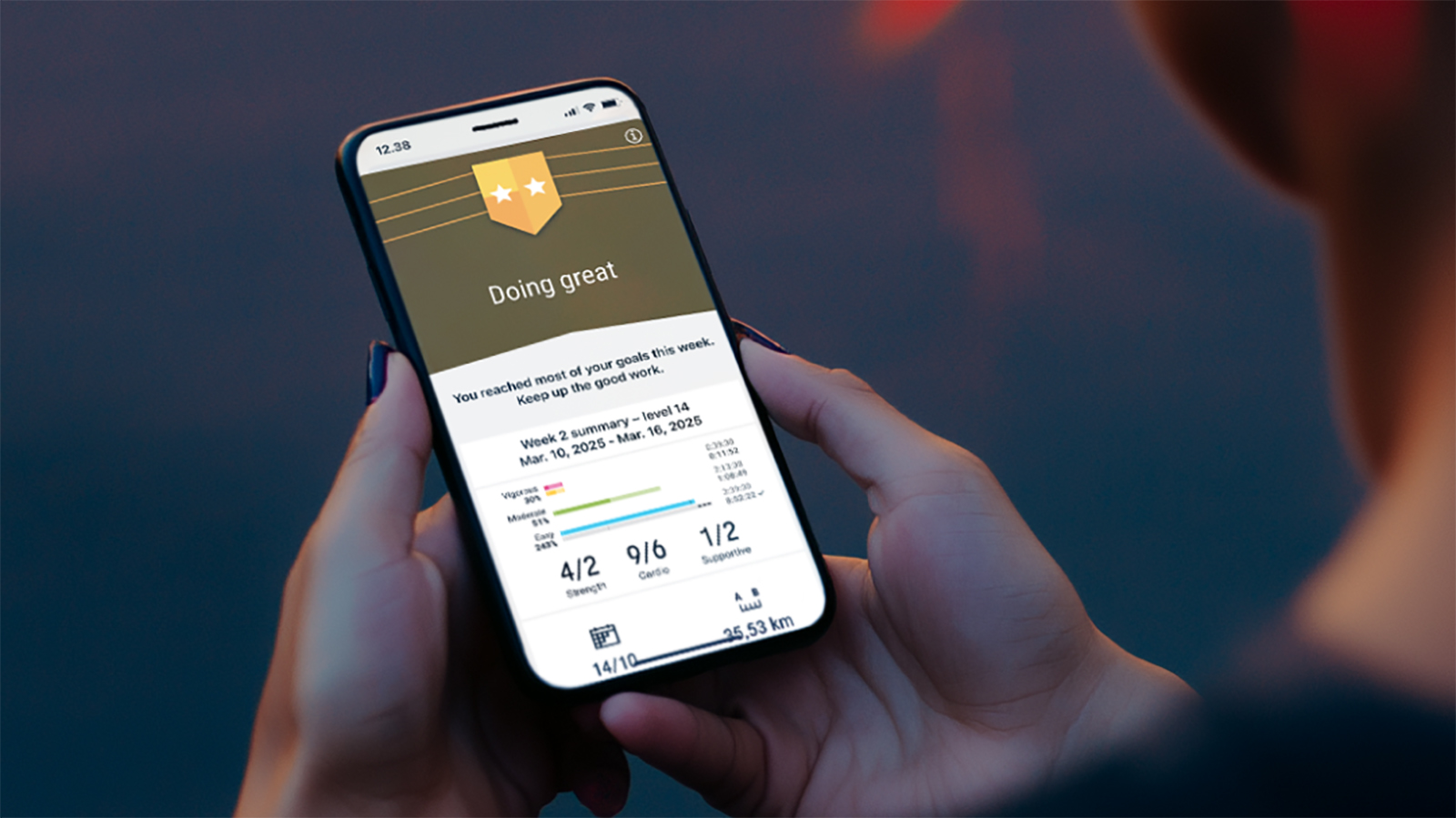 Polar’s new subscription feature lands in the shadow of Garmin’s Connect+ rollout
Polar’s new subscription feature lands in the shadow of Garmin’s Connect+ rolloutPR genius or timing disaster? Polar’s new Fitness Programme adds adaptive training to its ecosystem
By Matt Kollat Published
-
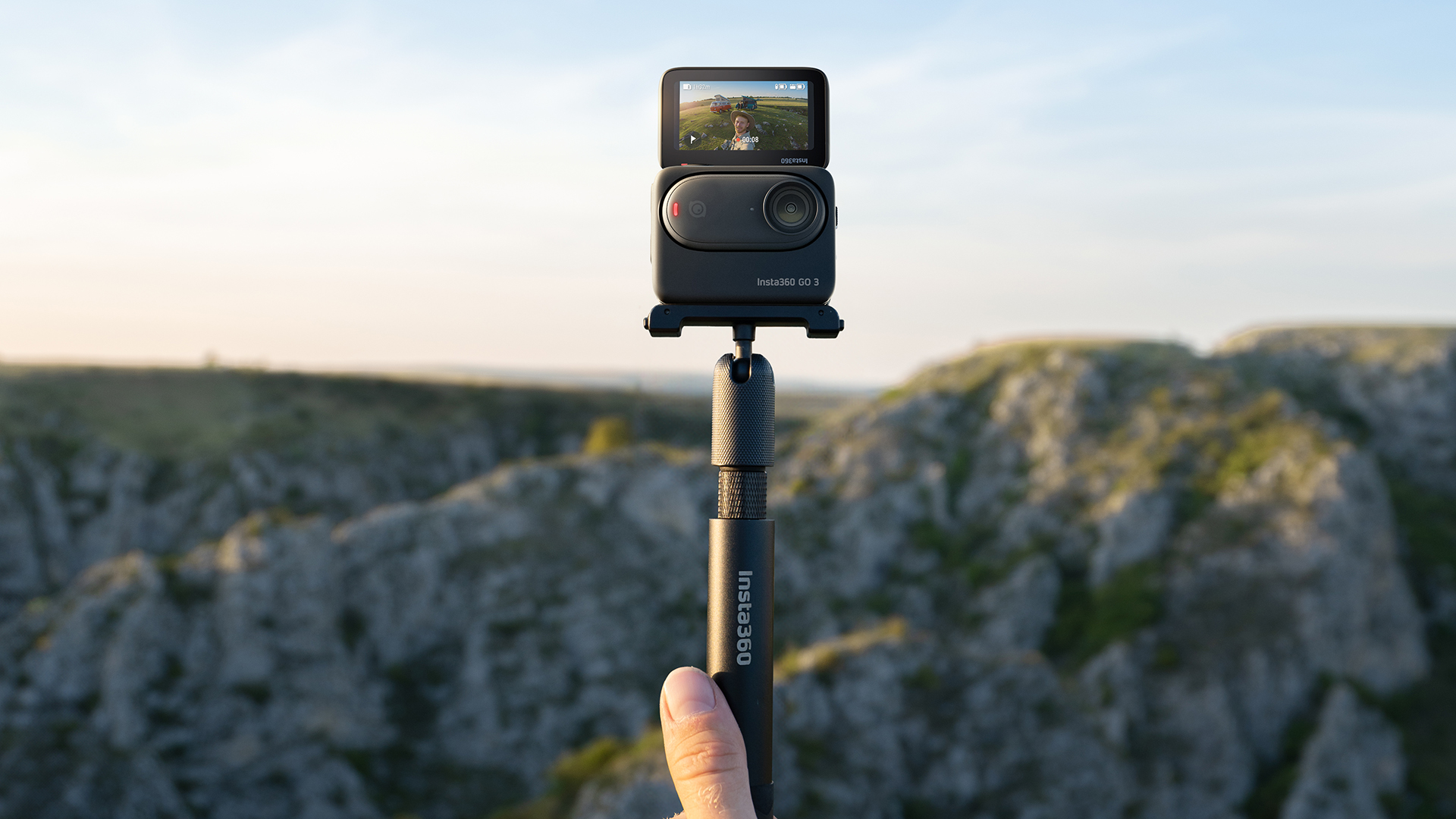 Best action camera 2025: rugged cams for adventurers and vloggers
Best action camera 2025: rugged cams for adventurers and vloggersThe best action cameras from GoPro, DJI, Insta360 and others to capture your adventures
By Matt Kollat Published
-
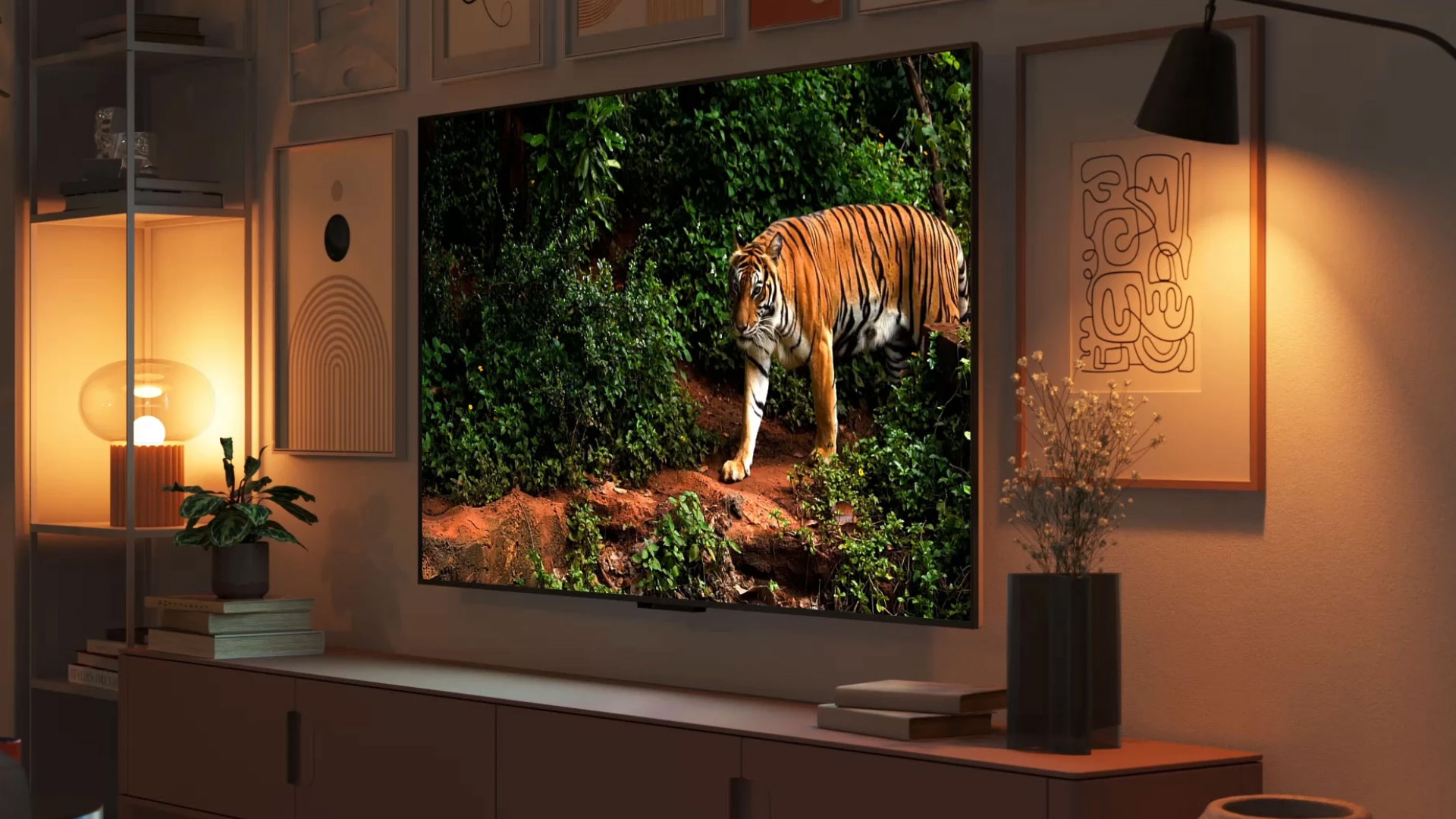 Amazon Fire TV Omni Mini-LED 4K TV review: a huge step up in performance
Amazon Fire TV Omni Mini-LED 4K TV review: a huge step up in performanceAmazon's second-gen Fire TV and first Mini-LED TV is a great option
By Steve May Published
-
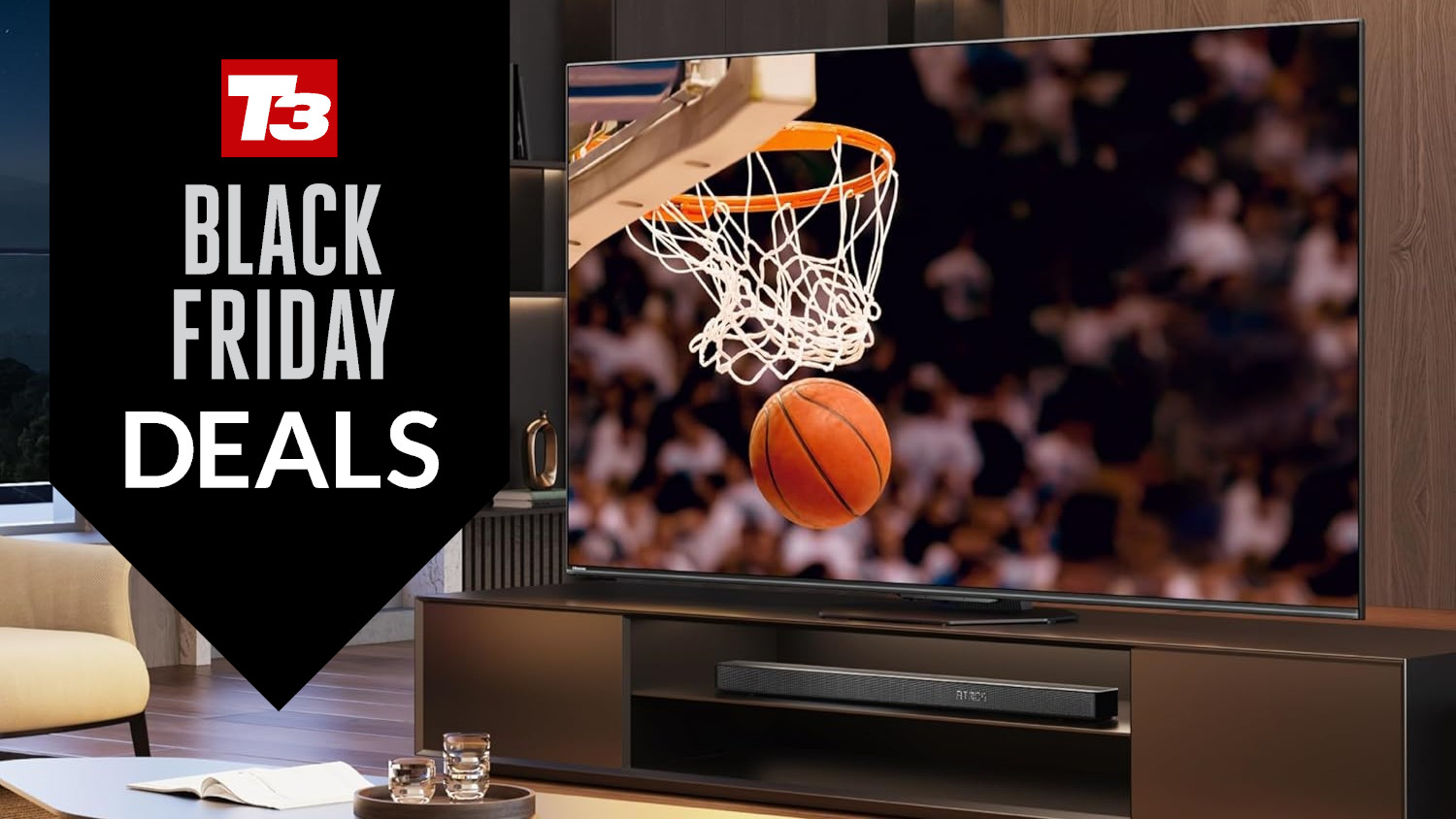 Early Black Friday deal sees price of massive 75-inch TV slashed
Early Black Friday deal sees price of massive 75-inch TV slashedYou'll even get a free copy of NBA 2k25
By Sam Cross Published
-
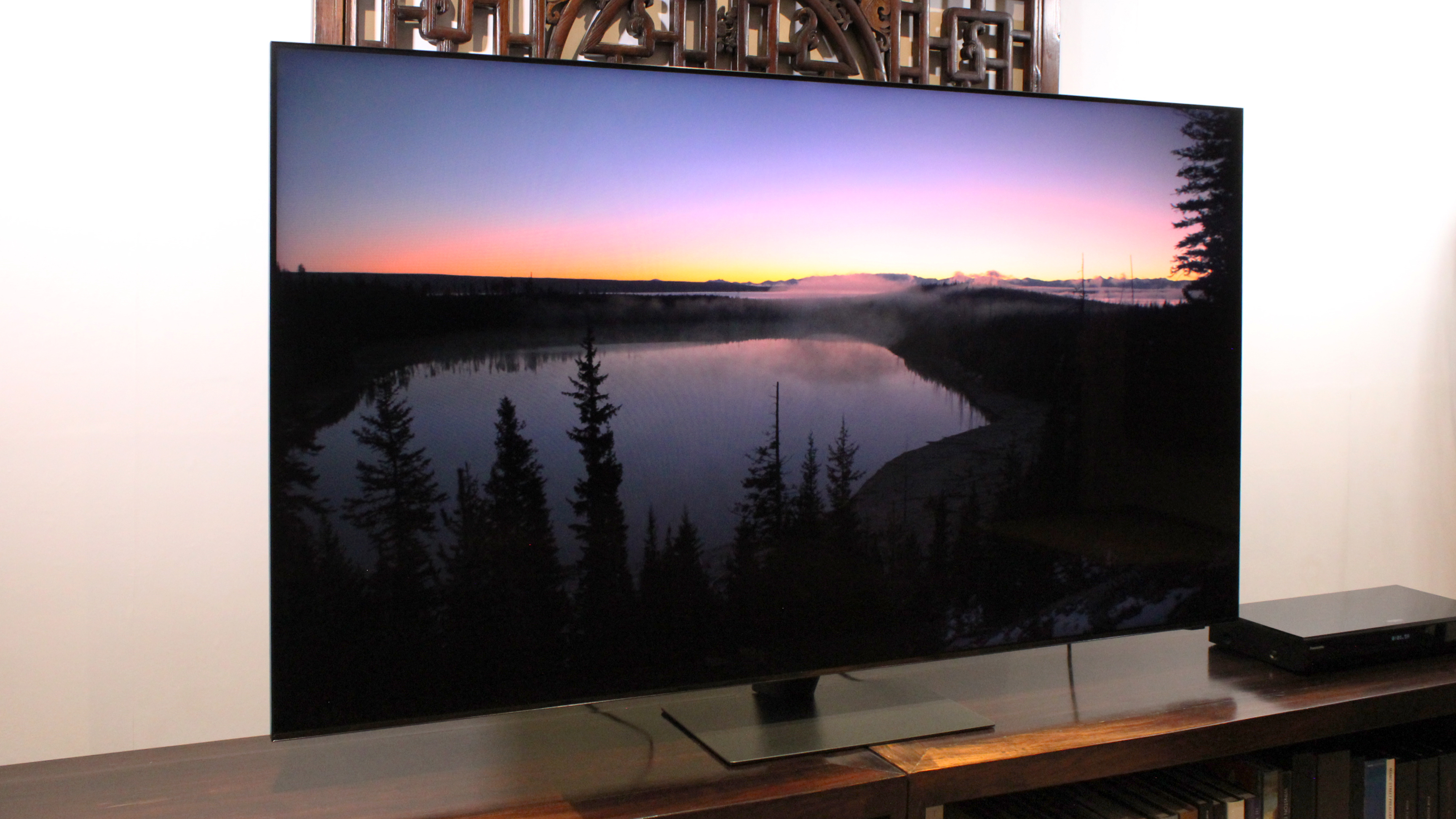 Your Samsung TV just got its biggest free upgrade yet
Your Samsung TV just got its biggest free upgrade yetOne UI is rolling out to the latest Samsung TVs now
By Britta O'Boyle Published
-
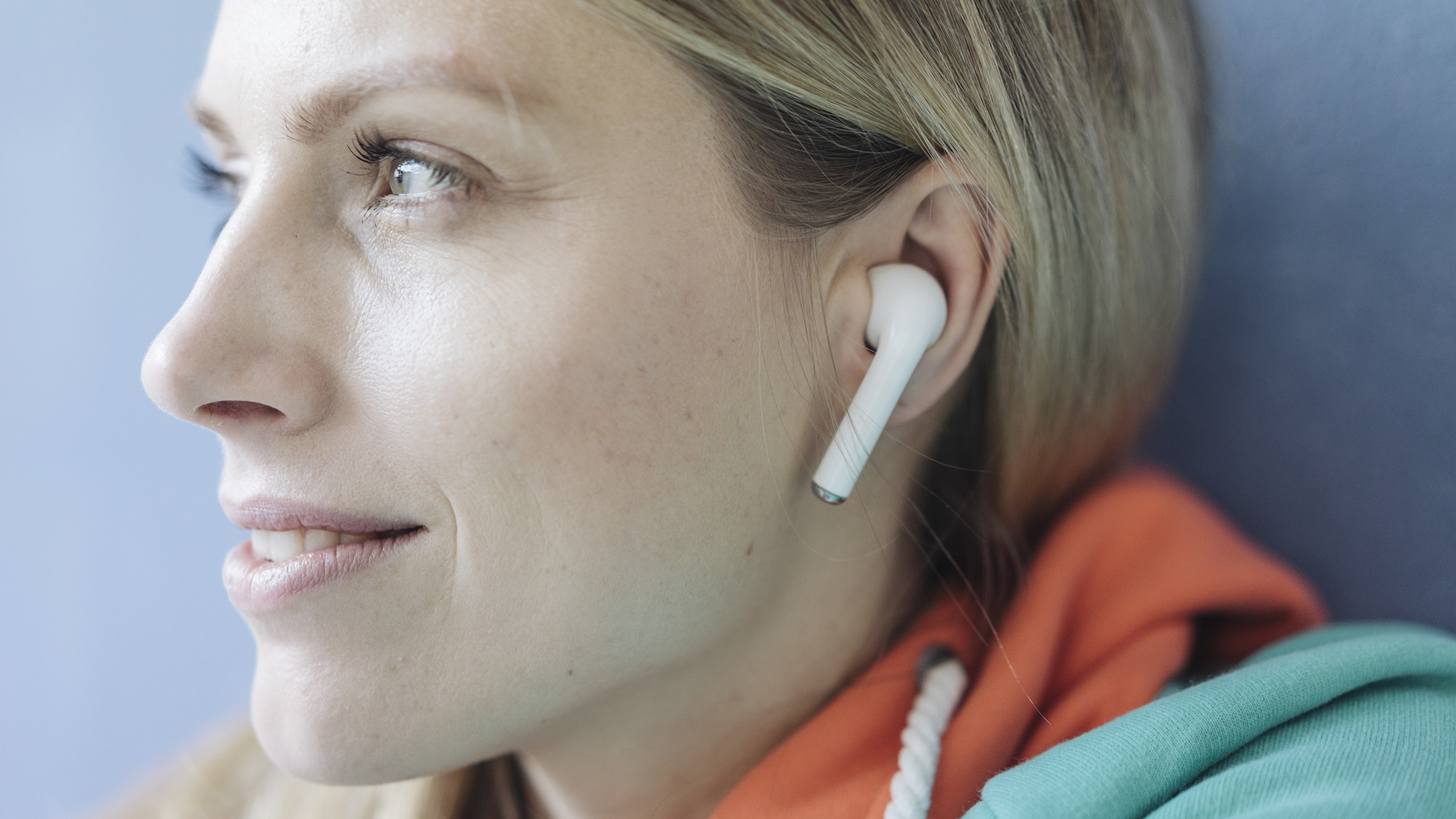 Best earbuds 2025
Best earbuds 2025Small in size but big in sound quality – these are ideal in-ear options
By David Nield Last updated
-
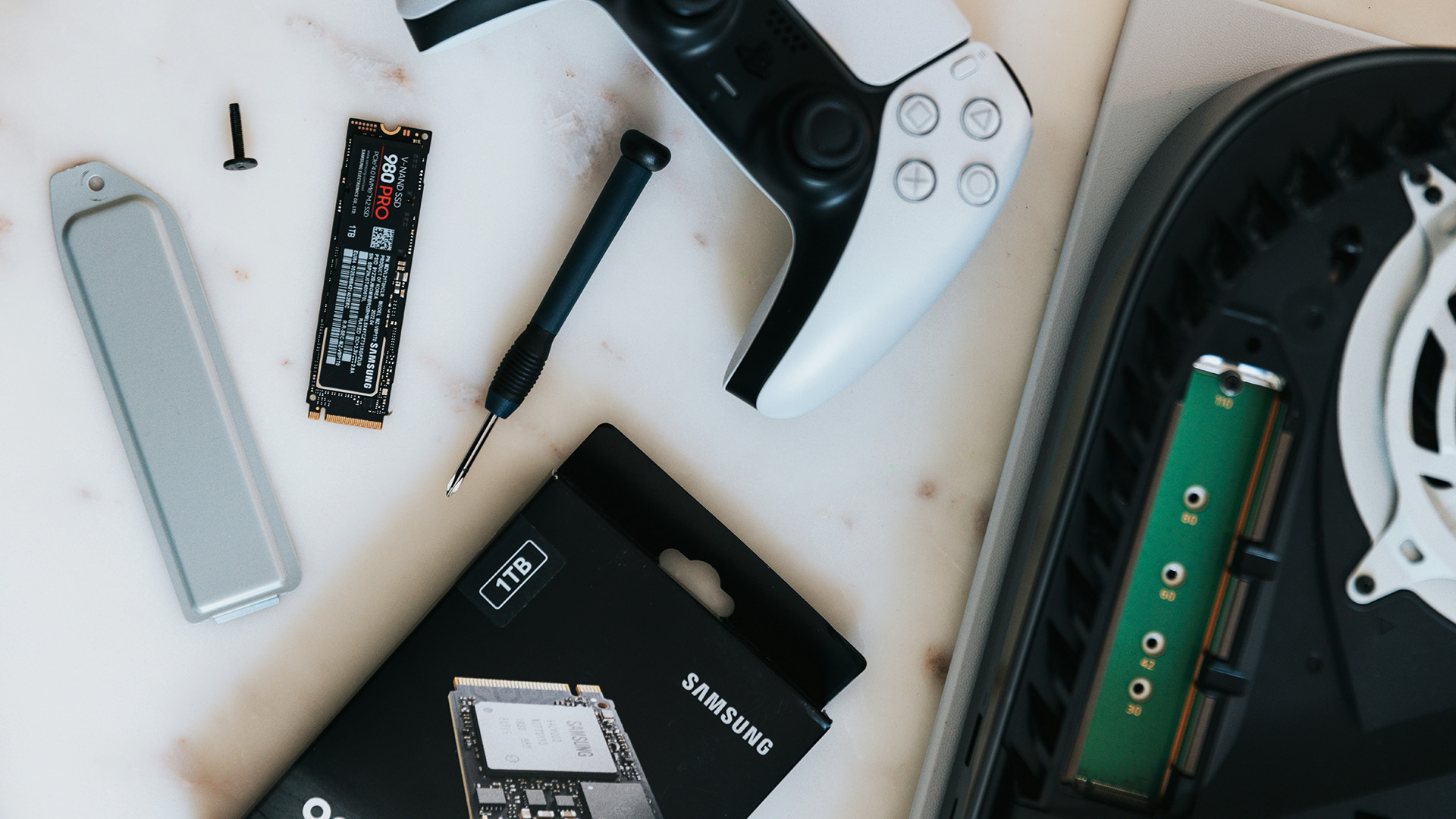 Best PS5 SSD 2025: store 100s more games on your PlayStation 5
Best PS5 SSD 2025: store 100s more games on your PlayStation 5The definitive guide to the best SSDs for PS5 available today
By Rik Henderson Last updated
-
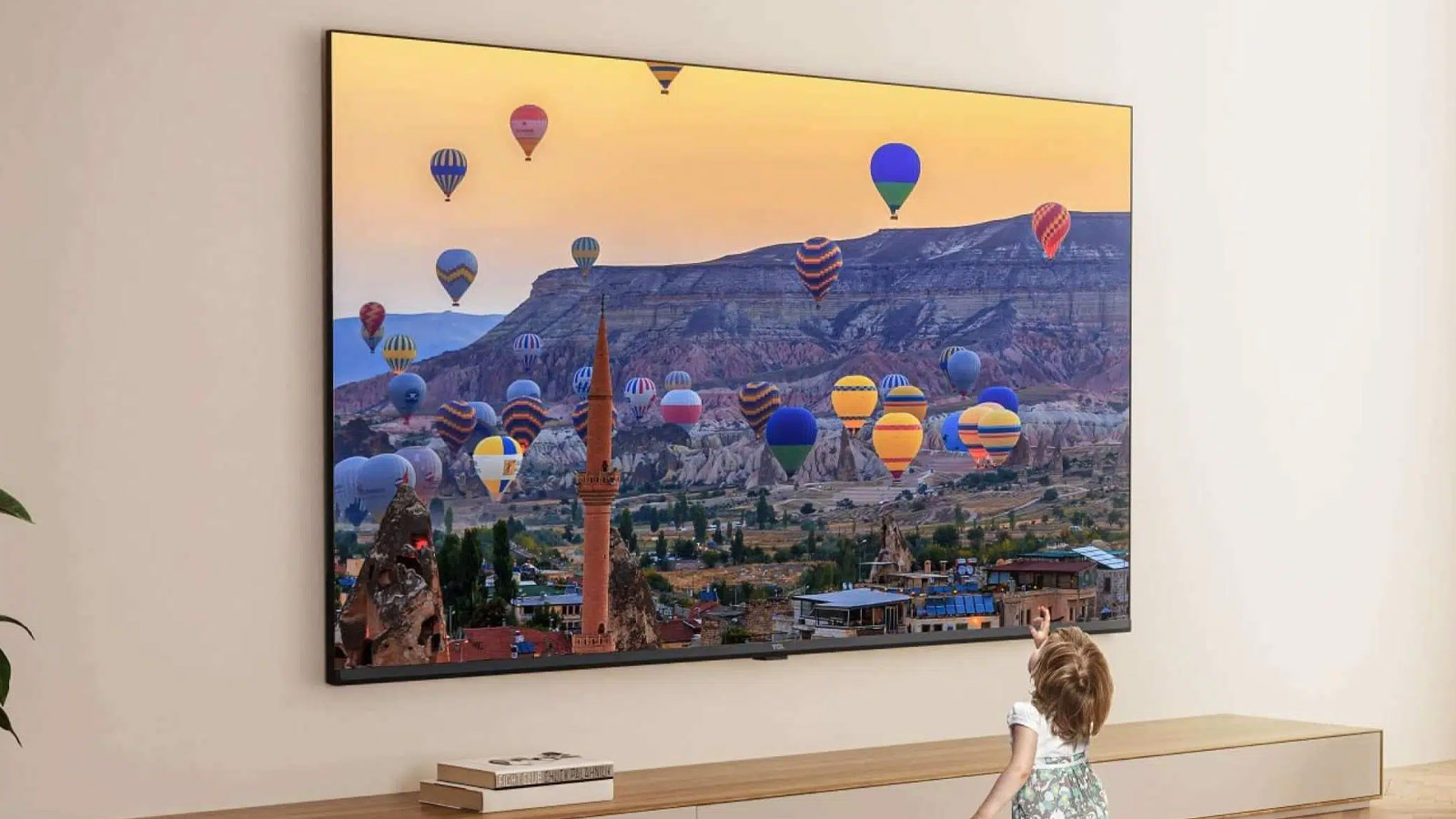 This ultra-bright mini-LED TV is the display of my dreams
This ultra-bright mini-LED TV is the display of my dreamsTCL's next flagship looks fantastic
By Andy Sansom Published
-
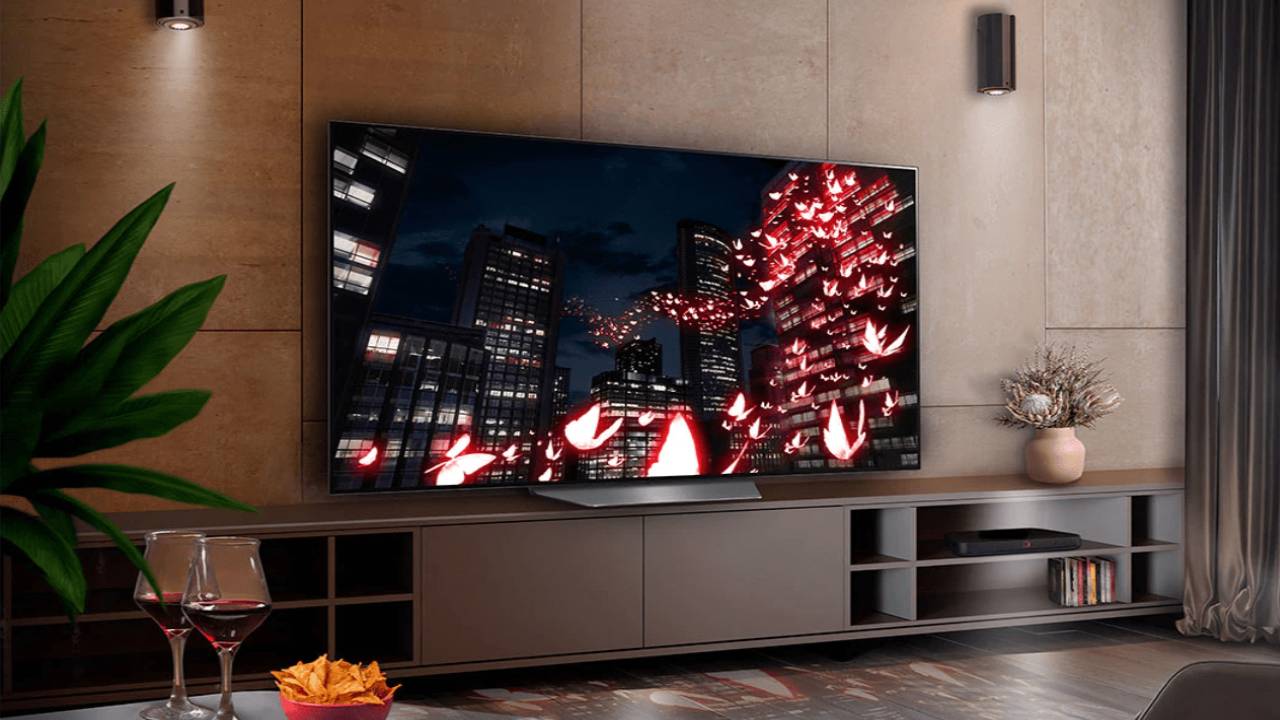 LG TV owners just got Apple TV+ for free
LG TV owners just got Apple TV+ for freeNo matter if you have an LG OLED TV or an LED model, you just got Apple TV+ for free
By Robert Jones Published